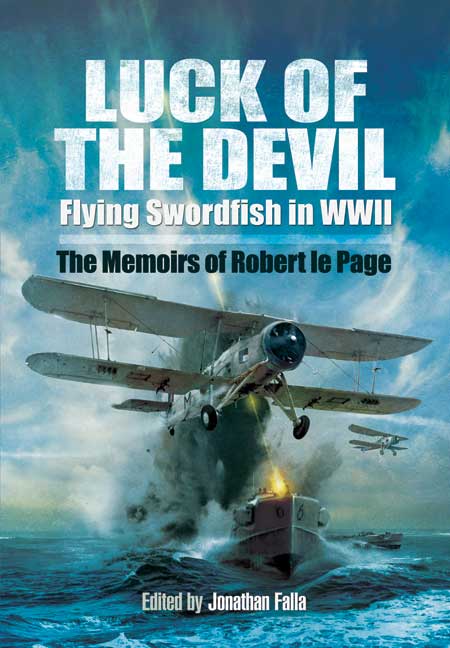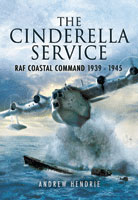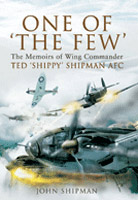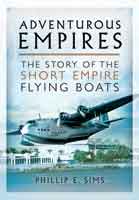Luck of the Devil (ePub)
Flying Swordfish in WWII
Imprint: Pen & Sword Aviation
File Size: 9.1 MB (.epub)
Illustrations: Approx 30 mono in plate section
ISBN: 9781844686001
Published: 3rd October 2011
Robert le Page flew with the Fleet Air Arm from 1940 to 1945, mostly in 816 Squadron flying carrier-based Fairey Swordfish. He saw action mine-laying off Cherbourg, hunting U-boats, escorting convoys in North Atlantic and in the Arctic seas and covering D-Day. Much of his early war years were aboard HMS Dasher and he was lucky to be ashore when the carrier mysteriously blew and sank in the Clyde. This decimated 816 Squadron which was eventually re-equipped and then worked up to operational readiness to fly from HMS Tracker. His story is full of insights into wartime naval flying. When they were tasked with finding and attacking German E Boats they found that in a headwind these powerful boats could outdistance the 'Stringbag'. They devised a plan which was to glide as quietly as possible on their approach to the quarry and power up the engine only seconds before they attacked – however they never managed to sink one. Once when landing in rough weather his aircraft was waved to go round again. With throttle wide open the Swordfish struggled back into the air, but alas the tailhook snagged the top wire of the barrier protecting other parked aircraft. The author remembered staring down from the stalling aircraft to see a terror stricken fitter gazing up at him. Fortunately all survived.
In the early 2000's and at the age of 80, Robert le Page decided to write his wartime memoir for both his family and friends.
History Book Chat
With an aging memory inevitably their were some errors, so this published book has been researched and edited by his son, Jonathan.
Robert was in the Home Guard when he received his call-up papers in 1941 to join the Fleet Air Arm as a pilot. An issue with his eyesight however, led to him becoming an observer aboard the Fairey Swordfish instead.
As the war rumbled on, he would have to endure a frustrating ten month training programme before joining an operational squadron. For the remainder of the war he would serve aboard various Royal Navy ships and see action in both the Battle of the Atlantic and also supporting D-Day.
This is not a military history book providing a narrative of consecutive operations. This memoir has a very personal feel as Robert reveals what it was like to train and learn new skills from navigation to wireless transmitting. How uncomfortable it was flying in cold conditions as the three man crew of the Swordfish were open to the elements.
We learn about some of the men he flew with and the commanding officers under which he served.
On a more personal note he reveals how he met his future wife and openly shares his own thoughts and fears of flying and serving in the war.
This very personal memoir provides the reader with more of a focus on what it was like to serve and fly in the Fleet Air Arm. Whilst Robert sadly died before this general publication, it has been a very entertaining and often a moving read.
The story is well worth reading.
Aeroplane
About Robert Le Page
After the war Robert le Page became an academic linguist. This book is based upon a privately published edition now unavailable. Robert died in 2006 but his son, a dramatist and novelist by profession, has restructured the work to include many new notes and letters written by his late father.
















